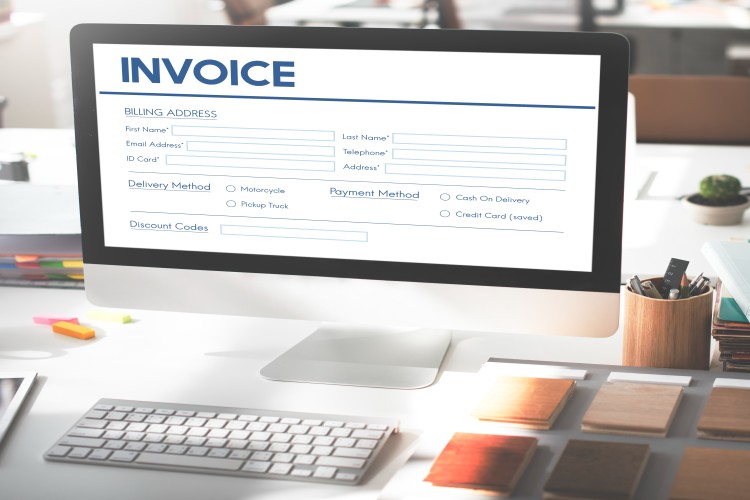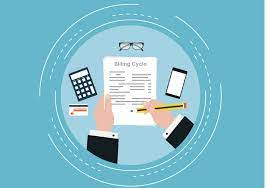If you’ve ever wondered, “What an invoice is?” you’re not alone. In the realm of business and finance, understanding the purpose of an invoice is crucial.
It is a business document that the seller issues to the buyer to obtain payment for the goods or services delivered.
When you’ve delivered your goods but before you get paid, you send them to the customer. It provides a detailed breakdown of the services you are billing for.
You should enter the price and quantity for each good or service you charge for separately as a line item. At the bottom, each line item is totaled and, if applicable, tax is applied.
For them to be submitted correctly, invoices must follow local government regulations, which can differ depending on the supplier or contractor.
There are various types of invoices that businesses can produce for their clients depending on the reason.
For instance, whereas freelancers may concentrate on hours billed or tasks finished, retail enterprises may add the product name, description, SKU number, and quantity sold in their invoices.
Components of an Invoice
The essential components of an invoice include the following:
- Seller’s information
- Buyer’s information
- Invoice number
- Invoice date
- Business logo (optional)
- Business contact information
- Customer contact information
- Accurate cost and description of goods or services provided.
- Tax number or VAT identification number (if applicable)
Types of Invoice
1. Commercial Invoice
It is a legal document that serves as a contract and proof of sale between the buyer and seller in an international transaction.
The items being sold and the consumer’s price is made very plain. It is crucial to complete this paperwork accurately since customs authorities utilize commercial invoices to calculate customs charges.
Information on other papers, such as packing lists and bills of lading, should correspond with that on the commercial invoice.
2. Pro forma Invoice
Pro forma invoices are draft bills of sale delivered to customers before the shipment or delivery of goods. It is an agreement for products or services that haven’t been offered.
You can use a Pro forma for several things, including requesting an import permit, drafting a contract for pre-shipment inspection, issuing a letter of credit, and setting up a hard currency transfer.
By settling on all terms up front, they can also assist manufacturers in avoiding problems at delivery.
3. Time-based Invoice
An hourly invoice records the hours worked by a contractor or employee who is paid hourly. It is a request for money delivered by a company that bills for labor by the hour or a freelancer.
Hourly invoices should contain the following information: contact details, dates, and other logistical details; descriptions of the services provided; hourly rates; the number of hours worked; the total amount owed; and the payment terms.
4. Standard Invoice
A typical invoice is a straightforward form used to charge for goods or services. It lists the description, price, acceptable methods of payment, and invoice due date for the good or service.
You can choose from a variety of formats and modify them to suit your specific requirements.
When selecting the best invoice template for your business, the ideal contents of a typical invoice include the services or materials provided to clients and your company’s goals.
5. Credit Invoice
An invoice that describes a refund or credit is referred to as a credit invoice, credit memo, or credit note. It is used when a client requests a refund or the seller grants the customer credit for any reason.
It can be utilized in various situations, including pricing disputes, returns, promotional reductions, and errors.
6. Debit Invoice
A debit invoice, often referred to as a debit memo or debit note, is a formal accounting record created by a corporation to raise the sum that a customer owes the business.
When a slight modification to an existing bill is required, it is employed. To advise vendors of the quantity and value of returned items, buyers utilize debit notes, different from invoices.
7. Recurring Invoice
A recurring invoice is sent to the same client for the same sum regularly, like once a week or once a month.
Businesses that constantly serve their customers with goods or services benefit from this billing.
Recurrent invoicing enables businesses to routinely and in advance bill consumers’ credit cards for goods and services.
8. Interim Invoice
A business might invoice a customer for a product or service using an accounting approach known as an interim , or progress invoice, or progress bill.
This technique enables businesses to bill clients in regular installments for work already accomplished, and it is frequently used in the case of significant assets or lengthier projects.
Interim invoicing can break project payments into smaller portions matched with critical milestones or predetermined dates.
Importance of Using an Invoice
1. Accuracy in billing
Billing accuracy depends on using an example invoices. Invoices show how well a company manages its daily operations, and key performance indicators are used to gauge invoice accuracy (KPIs).
Correct invoices create a firm foundation for the relationship between the business and its clients, and they assist in ensuring that enterprises get paid on time.
Companies may ensure that their bills are correct and comprehensive by employing an invoice example, which can enhance their KPIs and overall financial health.
2. Avoidance of payment disputes
To prevent payment disputes, using invoices is crucial. Both parties can resort to a written record of the items or services delivered, the price agreed upon, and the terms and circumstances of payment if there is ever a dispute.
Businesses must be proactive in creating bills and engaging with customers if they want to prevent conflicts.
Whenever there is a disagreement, it is crucial to spot it early on in the collection process and find a rapid solution using a trained dispute resolution procedure.
Having a clause in the contract that addresses disputed invoices can help clarify what happens in that situation.
Both parties can turn to a written record of the goods or services delivered, the agreed-upon price, and the payment terms and conditions in the event of a dispute.
3. Professionalism in business transactions
A professional invoice accurately records the financial transactions between your client and your company and conveys professionalism and your brand identity.
Between a business and its customers, invoices are enforceable contracts that prove the services provided and the money due.
Also, invoices assist firms in managing their finances and tracking sales, allowing them to control costs and use less paper.
Conclusion
Invoice generation involves much more than merely keeping track of business dealings between two parties.
Businesses can learn about their customers’ purchasing habits and uncover trends, popular goods, peak purchase periods, and other information by analyzing data. Due to this, efficient marketing plans can be created.













